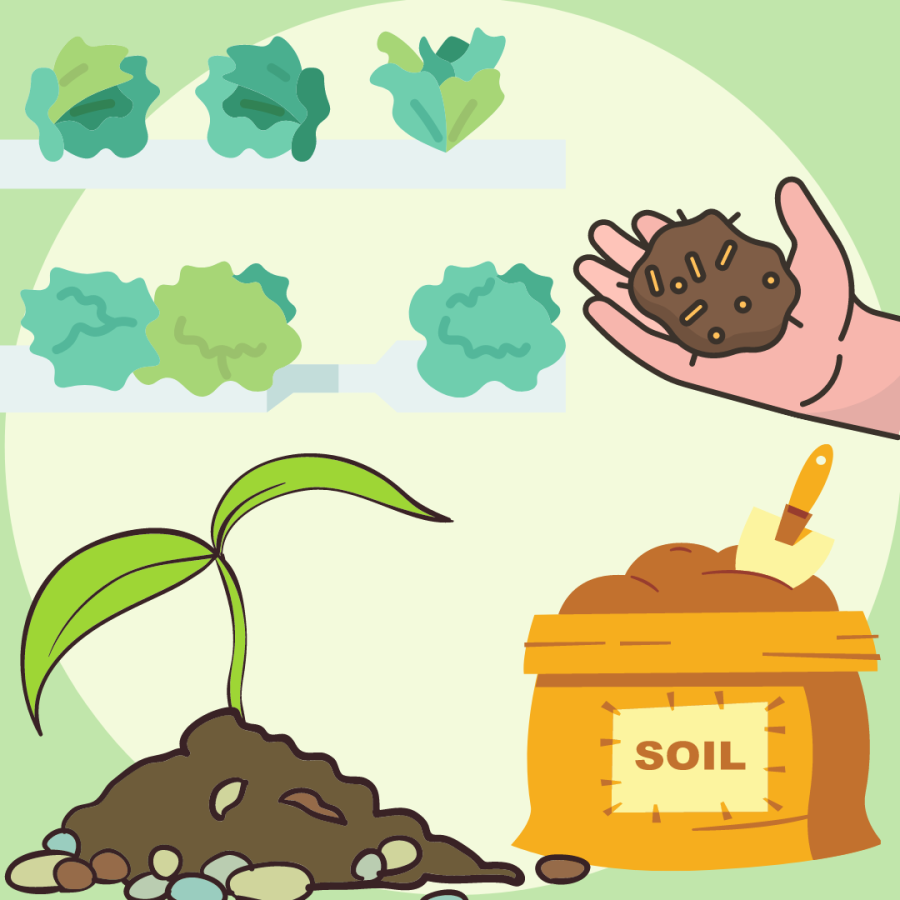You may not know this, but in 2014, the United Nations Food and Agriculture Organization (FAO) reported that soil around the world was degrading rapidly. They estimate that the remaining topsoil around the world will be gone by 2070. This means humans have less than 60 soil harvests left.
While these are just estimates, there is no denying that soil destruction is happening all over the world. Humans have been growing their plants in soil for thousands of years. I was shocked to hear these statistics. Could the earth really just run out of good dirt?
Can you even grow a plant without dirt? Yes.
There are a variety of alternatives to traditional soil methods such as aquaponics, aeroponics and hydroponics (by far the most popular). Plants need essential nutrients, sunlight, carbon dioxide and water to survive.
In hydroponics, the plant is grown in nutrient-rich water as opposed to soil. Hydroponic plants require no soil or dirt, which sadly takes away everyone’s favorite aspects of gardening like pulling weeds, dealing with gophers and shoveling holes. The added nutrients in the water give the plant everything it needs to grow and thrive in the same way the nutrients in the soil would.
Even though the plant is grown directly in water, hydroponic plants use far less water in comparison to soil plants. Research done by the National Park Service found hydroponic systems use as much as ten times less water than traditional soil methods. Water is retained and recirculated in a hydroponic system, whereas water can run off and drain into the environment when using soil methods.
Water is the most valuable resource on this planet. We must do everything possible to conserve it. A large portion of our planet’s water supply goes directly to agriculture. Any reduction in the amount of water spent on agriculture would be beneficial to humanity and our planet.
Rather than having to water your soil plants every day, you can get by tending to your hydroponic plants only once or twice a week (or less). I currently grow several plants and vegetables hydroponically and have been for over a year. Last summer, when I went on vacation for 10 days, the plants received no water or attention. Surprisingly, they were bigger and healthier than when I left. This wouldn’t have been the case had these been soil plants.
Hydroponic crops have also been found to produce higher crop yields in a shorter amount of time. With a hydroponic system, you can save time, water and labor while producing a larger crop yield in a shorter time frame.
If you’ve been unable to garden because you don’t have the space or don’t want to deal with dirt, try hydroponics. Save space and avoid the mess. If you’re one of those people who have never grown plants and vegetables because you think you’ll kill them, try hydroponics. I can’t tell you they won’t die, but give it a try. If you have been growing plants and vegetables for years in soil, try hydroponics.
Change is coming. Hydroponics and other soil alternatives will inevitably be the future of agriculture.
Brian is a senior studying business management and entrepreneurship.










